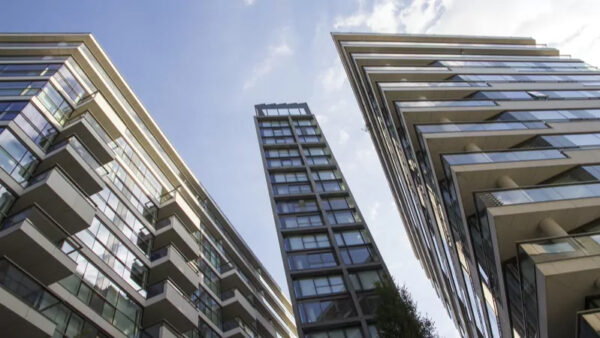
Policy and regulatory changes will drive progress on building safety in England.
Over the past year, the construction industry has been grappling with the requirements of the Building Safety Act, digesting the Grenfell Tower Inquiry Phase 2 Report and navigating delays in obtaining Gateway 2 and 3 approval due to resource constraints at the Building Safety Regulator (BSR).
It has been remediating unsafe buildings at a pace slower than the government hoped and has had to familiarise itself with the new and more rigorous standards for fire safety for residential buildings.
The pace of change in the building safety landscape looks set to continue as government ramps up pressure, particularly around unremediated buildings – so change will continue unabated throughout 2025. Here are some policy and regulatory changes that lie ahead.
Remediation Acceleration Plan
There are still several unresolved questions around building safety, such as whether the draft legislation from 1984 introducing the right to pursue civil damages for a breach of a duty imposed by building regulations (regardless of building height and type) will ever come into force.
The Remediation Acceleration Plan (RAP) and accompanying documents, published in December 2024, provide clarity on a number of building safety issues.
These include:
- The Building Safety Levy: The levy is intended to come into force in autumn 2025 and will be charged on all new residential buildings in England that require building control approval (with some exceptions).
The rates for this levy are yet to be announced but its aim is to raise around £3.4bn over the next 10 years to pay for the remediation of building safety defects. - Increased building registration requirements: A new duty to register buildings between 11-18 metres tall and a proposal to tighten requirements relating to building assessments.
- New cladding remediation deadline: The new cladding remediation deadline will be the end of 2029 for buildings 18 metres or over in a government-funded scheme, while buildings of 11 metres or over must at least have set a remediation completion date by then.
The deadline will be coupled with financial and criminal liability sanctions for non-compliance. - Reforms to charges for arranging insurance: New consultation considers how to restrict what leaseholders are charged for arranging insurance to a “fair and transparent permitted insurance fee” under section 59 of the Leasehold and Freehold Reform Act. It launched on 2 December 2024 and closed on 24 February 2025.
- Beneficial ownership disclosure requirements: New powers will be introduced for the secretary of state and regulators to compel entities to disclose their beneficial ownership so the entity responsible for a building can be identified.
- Leaseholder support through the remediation process: New measures will enable leaseholders in buildings that have reverted to the state when the owner dies without a will or heirs (escheated) to manage their building and apply for cladding remediation funds, and to ensure that regulators are notified when landlords of buildings 11 metres or over become insolvent, disclaim or go into escheat.
- Developer-led remediation: The RAP introduces a new voluntary “joint plan” to accelerate progress on developer-led remediation by way of 35 separate commitments. At the time of the RAP’s launch, this had been agreed with 29 developers and the government expects more developers to sign up to the plan in the coming weeks.
- Remediation enforcement: The RAP also contains proposals to bolster remediation enforcement, including more funding and enforcement powers for local authorities and the introduction of local remediation acceleration plans run by metro mayors.
It confirms the government’s intention to take action against construction product manufacturers, as promised in response to the Grenfell Tower Inquiry Phase 2 Report, with a new construction products standard likely to be published in 2025.
Building safety case law
Further case law on the ever-evolving building safety landscape is anticipated: Osborne Clarke is acting for BDW in a Supreme Court case concerning the allocation of liability where a property developer carried out remedial work on properties it no longer owned (URS Corporation Ltd v BDW Trading Ltd) and the Court of Appeal will make a decision on remediation contribution orders in Triathlon Homes LLP v Stratford Village Development Partnership.
Building regulations guidance
The BSR will publish revised Approved Documents (the guidance to the building regulations) early next year. Businesses should stay informed on these developments as they are likely to have an impact on building safety regulations and practices.
Other building safety developments expected include the government’s intention to stop the “most egregious companies” implicated in the Grenfell disaster from being awarded government contracts (with guidance on this expected early this year), a promise to respond to the Grenfell Tower Inquiry Phase 2 Report in full by early March and updating parliament (by September) against every building safety commitment made.
Conclusion
The Grenfell Tower Inquiry’s final report made sobering reading for all in the industry and beyond. Reform was clearly necessary and urgent.
However, the resourcing issues at the BSR will not be resolved overnight, and the extensive and ever-growing body of building safety related requirements continues to pose an enormous challenge to an industry struggling with recent tax increases, high levels of insolvency, staffing issues and persistently high interest rates and inflation.
The industry will need to work hard to stay abreast of developments and ensure its contracts and practice reflect the latest changes in this area.
Alexandra Gower is a partner and Sarah Steed is a senior knowledge lawyer in the Projects, Construction, Planning and Environment team at the law firm Osborne Clarke.












